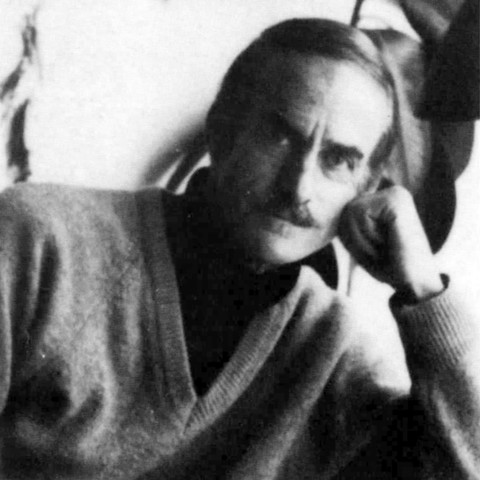This text was originally published in Advertising Art 83/2.
Lance Stirling is one of Australia’s lucky designers. Since his youth he has been able to develop his natural aptitude in the field in which he wishes to succeed; that is, creative design in its broadest form.
Whether or not it is a company logo or the whole program of a corporate promotion, Lance Stirling is a man who must be considered.
He is a person who does not welcome compromise and his pursuit of excellence is one that has been widely recognised. He has been an award winner from his earliest days, when he won the Australian Youth Art Prize (Oils). Other accolades have included an exhibition of watercolours at the Athanaeum Gallery; he has been included in International Who’s Who in Graphic Art, Graphis Press, Switzerland; has had works reproduced in Graphis and Penrose Annual; was awarded the Gold Medal for Design in the 1981 APPA Awards.
Stirling says his interest in graphics took off in a most unlikely place – one of Australia’s largest but most conservative advertising agencies – George Patterson’s.
“There I discovered the first copy of Graphis I had seen,” he says. “It also impressed me that a fellow employee, Vern Davidson, had a work reproduced in one. Thereafter every job became a painful exercise in design, whether it communicated or not.”
Fortunately, Art Director Oily Gardiner was a patient, good-humoured man but Stirling says he offered no resistance when he was offered a position at Woman’s Day. Incidentally, there he met another ex-Patterson artist, Stan Kriss, who at that time, Lance feels, must surely have been one of the finest exponents of lettering and script in the world.
Woman’s Day had a large complement of artists with an atmosphere which is probably not often experienced today because of the tendency to use freelancers rather than employ staff.
“How I managed to work in one room with ten artists, I don’t know. Today I find it difficult to concentrate on creative work with others around – even the music has to be switched off. It’s often a relief to do the less demanding rendering for a rough or finished art,” he says.
Stirling feels that perhaps the most influential factor in his early career was the formation of a group of graphic artists calling themselves the Ambulant Cheese Society. They met with enthusiasm monthly to discuss every aspect of their profession. As he remembers, the original members were Eric Maguire, Arthur Leydin, Richard Beck, Owen Foulkes, Roy Burslem, Patrick Russell, Ron Thompson, Joe Greenberg, Don Nelson, Verdon Morcom and Stirling himself. Very often there would be invited guests – notables such as Douglas Annand, Hal Missingham, Eric Westmore, Wes Walters, Tate Adams, “Tiger” Lyon and others. The invitations (designed in turn) are still interesting to look at, even if a little dated.
After Woman’s Day he did the usual round of advertising agencies, being art director of three – also an art studio in Sydney. He found that he was often categorised (though not by choice) as a designer of sophisticated pieces who wasn’t quite suited to the more run-of-the-mill agency work (which has really constituted the largest proportion of his work by far). “The type of work one seems to specialise in changes over a period of time. Earlier, Annual Reports constituted a large part of my work, but I do few today – though not by choice. Packaging did not feature a great deal in my repertoire then, and yet now there would be one on the job list every week.”
Stirling says that, like most artists, he prefers to work directly with the client who is to make the final decision. Even then it is only possible to produce work of a standard in direct relation to that client’s attitudes and understanding. There are too few enlightened clients prepared to stray from a safe path and actually encourage work of originality and quality.
“Some years ago I ‘tried my hand’ at teaching – part-time at the Royal Melbourne Institute of Technology and three years as Senior Lecturer at the Riverina College of Advanced Education, establishing the Graphic Design course – difficult but valuable years,” he says.
“Had I joined a well-established course I might still be a lecturer today, but the work load in the circumstances was too much – probably because I hadn’t found the compromise between giving too much or too little of myself. But although there are great rewards to be experienced in teaching I still prefer to spend my time on the board.”
The only thing that rivals Lance’s interest in graphics is a passion for music, which began at the age of 11 as a boy soprano. Thankfully, he says, the voice turned to a tenor that has sung leads with the National Theatre Opera Company, given many ABC radio recitals, and a highlight – recorded with the Melbourne Symphony Orchestra.
His collection of 3000 records (all classical) threatens to soon force him into a larger studio, although he says he can’t blame them entirely. “I am an untidy worker and need plenty of space.”
Lance Stirling thinks that, all things considered, graphic designers are a privileged lot. He enters his studio every day relishing the creative challenges that come his way – and he gets paid for it.
